-

Dec
13
Interpretive Summary: Effect of Pseudostellaria heterophylla polysaccharide on the growth and liver metabolism of chicks

In order to explore the possibility of Pseudostellaria heterophylla polysaccharide (PHP) as green and healthy feed additive, we evaluated the effects of PHP on the growth, development and liver metabolism of chicks by feeding chicks diets in this study.
Read more
-

Dec
13
Interpretive Summary: Heritability and variance component estimation for feed and water intake behaviors of feedlot cattle

Feed and water intake are important aspects of cattle production to understand because they impact producer profitability and sustainability. While feed intake and, to a lesser degree, water intake have previously been studied, the associated feeding and drinking behaviors are relatively unknown and lack standardized phenotypes.
Read more
-

Dec
13
Interpretive Summary: The role of inbreeding depression on productive performance in the Italian Holstein breed
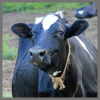
Inbreeding depression is a reduction in performance or health due to the mating of closely related individuals. The overall aim of this study was to investigate the level of inbreeding in the Italian Holstein dairy cow breed and quantify its negative effect on productive performances.
Read more
-

Dec
13
Interpretive Summary: Associations between polymorphisms in the myostatin gene with calving difficulty and carcass merit in cattle
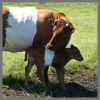
The objective of the present study was to quantify the association between 21 known myostatin mutations with calving difficulty, carcass fat, carcass conformation, and carcass weight in 12 prominent cattle breeds. Out of all segregating myostatin variants, the nt821 deletion had the greatest observed association with calving difficulty when the homozygous deletion was carried by either the calf or the dam.
Read more
-

Dec
13
Interpretive Summary: Blood transcriptomic differences in the immune response under stressful environmental according to stocking density in pigs
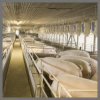
Animal welfare in the pig industry is a worldwide trend, and appropriate livestock management can improve welfare. Balancing stocking density and productivity is crucial in intensive farming systems. This study used behavioral and physiological parameters to assess welfare levels related to stocking density.
Read more
-

Dec
07
Interpretive Summary: Dietary Betaine improves the intestinal health and growth performance of heat-stressed growing rabbits in summer

Due to the lack of functional sweat glands, rabbits find it difficult to release excess heat under high-temperature conditions, resulting in heat stress. This high-level temperature condition leads to substantial damage to growth performance and intestinal health resulting in significant financial losses for the meat rabbit industry.
Read more
-

Dec
07
Interpretive Summary: Body, carcass, and steak dimensions of straightbred Holstein calves and Angus-sired calves from Holstein, Jersey, and crossbred beef dams
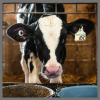
Divergent selection of beef and dairy breeds has caused differences in skeletal size and muscularity. When calves from dairy systems enter the beef supply chain, variability in mature size and carcass composition are introduced. The objective of this study was to characterize morphometric differences in cattle populations with different proportions of beef and dairy genetics.
Read more
-

Dec
07
Interpretive Summary: Timing of maternal nutrient restriction during mid- to late-gestation influences net umbilical uptake of glucose and amino acids in adolescent sheep

Maternal undernutrition during gestation can lead to decreased fetal growth, decreased uteroplacental blood flow, and changes in nutrient supply to the fetus. However, it is unclear how the timing (mid-gestation vs. late-gestation) and duration (40 d vs. 80 d) of nutrient restriction influence nutrient supply to the fetus during mid- to late-gestation.
Read more
-

Dec
07
Interpretive Summary: Removing maternal heat stress abatement during gestation modulated postnatal physiology and improved performance of Bos indicus-influenced beef offspring
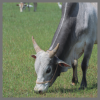
In dairy cattle, heat stress during late gestation negatively impacted offspring postnatal growth and immune function. The use of artificial shade is a management strategy that alleviates heat stress in environments with high temperatures and humidity.
Read more
-

Dec
07
Interpretive Summary: Early- and mid-lactation milk traits are associated with piglet growth during lactation
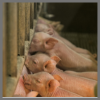
Early piglet health and growth are reliant upon milk from the mother. Increasing the gain of a piglet by 0.45 kg at weaning has been linked to finished pigs going to market earlier reducing environmental and financial inputs for producers.
Read more
-

Dec
07
Interpretive Summary: Beef embryos in dairy cows: feedlot performance, mechanistic responses, and carcass characteristics of straightbred Holstein calves and Angus-sired calves from Holstein, Jersey, or crossbred beef dams
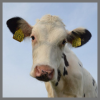
Improved reproductive management has allowed dairy cow pregnancies to be optimized for beef production. The objectives of this study were to use an embryo transfer model 1) to investigate the effect of the dairy management system on beef genetics and 2) to directly compare the merit of Holstein and Jersey genetics for feedlot and carcass performance with modern beef genetics.
Read more
-

Dec
07
Interpretive Summary: A computer vision image differential approach for automatic detection of aggressive behavior in pigs using deep learning
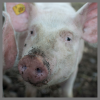
Aggressive behavior in pigs is a major concern for the swine industry that negatively affects animal welfare. This study aims to provide an efficient automatic solution based on computer vision and supervised deep learning models able to distinguish between aggressive and non-aggressive behavior of pigs using video recordings.
Read more
-

Nov
30
Infographic: Enhancing mathematical modeling skills for sustainable livestock production
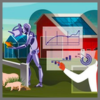
Mathematical modeling and data analytics are essential to assist in achieving sustainability in livestock production. Educating and training students and researchers in modeling techniques can prepare them for the development of successful mathematical models.
Read more
-

Nov
30
Interpretive Summary: ASAS-NANP symposium: mathematical modeling in animal nutrition—Making sense of big data and machine learning: how open-source code can advance training of animal scientists

Livestock production is undergoing a new revolution of incorporating advanced technology to inform animal management. As more and more technologies come to market, new challenges arise with developing a workforce trained to handle big datasets generated from these technologies and turning datasets into insight for livestock producers.
Read more
-

Nov
30
Interpretive Summary: ASAS-NANP symposium: Mathematical Modeling in Animal Nutrition: The power of identifiability analysis for dynamic modeling in animal science: a practitioner approach

When modeling biological systems, one major step of the modeling exercise is connecting the theory (the model) with the reality (the data). Such a connection passes through the resolution of the parameter identification (model calibration) problem, which aims at finding a set of parameters that best fits the variables predicted by the model to the data.
Read more
-

Nov
30
Interpretive Summary: Effects of ensiling sugarcane tops with bacteria-enzyme inoculants on growth performance, nutrient digestibility, and the associated rumen microbiome in beef cattle
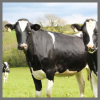
Major challenges when ensiling sugarcane tops include fermentation that results in high quantities of alcohol and decrease in nutrient digestibility due to the accumulation of fiber components. Increased efforts to apply bacteria-enzyme inoculants in silage have the potential to improve nutrient digestibility.
Read more
-

Nov
30
Interpretive Summary: Predicting microbial crude protein synthesis in cattle from intakes of dietary energy and crude protein
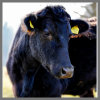
The ability to accurately and precisely predict microbial protein synthesis is crucial in predicting the supply of metabolizable protein in beef cattle. We updated a database previously used to predict microbial crude protein (CP) supply in beef cattle.
Read more
-

Nov
30
Interpretive Summary: Supplementation of palmitoleic acid improved piglet growth and reduced body temperature drop upon cold exposure

Reducing piglet mortality in the early days after birth is a significant challenge in the modern pig industry. The focus on achieving larger litter sizes has had a negative impact on piglets’ birth weight and their intake of colostrum. Additionally, piglets are born without easily oxidizable brown adipose tissue and have limited body reserves, making them more vulnerable to death due to their lower capacity for thermogenesis.
Read more
-

Nov
16
Interpretive Summary: Heat shock protein 27 regulates myogenic and self-renewal potential of bovine satellite cells under heat stress

This study aimed to elucidate the response of bovine satellite cells to heat exposure. Satellite cells were isolated from Holstein bulls and subjected to varying temperatures. Transcriptional, proteomic, and proliferative changes were assessed.
Read more
-

Nov
16
Interpretive Summary: Temperature Fluctuations Modulate Molecular Mechanisms in Skeletal Muscle and Influence Growth Potential in Beef Steers
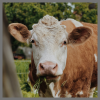
In this study, we investigated the effects of severe temperature fluctuations on beef cattle and their cellular and physiological responses. Our findings demonstrate that even moderate temperature swings can cause thermal stress in cattle, leading to observable behavioral signs such as extended tongue protrusion, reduced appetite, excessive salivation, and increased respiratory rate.
Read more
 DecInterpretive Summary: Effect of Pseudostellaria heterophylla polysaccharide on the growth and liver metabolism of chicks
DecInterpretive Summary: Effect of Pseudostellaria heterophylla polysaccharide on the growth and liver metabolism of chicks In order to explore the possibility of Pseudostellaria heterophylla polysaccharide (PHP) as green and healthy feed additive, we evaluated the effects of PHP on the growth, development and liver metabolism of chicks by feeding chicks diets in this study.
In order to explore the possibility of Pseudostellaria heterophylla polysaccharide (PHP) as green and healthy feed additive, we evaluated the effects of PHP on the growth, development and liver metabolism of chicks by feeding chicks diets in this study. DecInterpretive Summary: Heritability and variance component estimation for feed and water intake behaviors of feedlot cattle
DecInterpretive Summary: Heritability and variance component estimation for feed and water intake behaviors of feedlot cattle Feed and water intake are important aspects of cattle production to understand because they impact producer profitability and sustainability. While feed intake and, to a lesser degree, water intake have previously been studied, the associated feeding and drinking behaviors are relatively unknown and lack standardized phenotypes.
Feed and water intake are important aspects of cattle production to understand because they impact producer profitability and sustainability. While feed intake and, to a lesser degree, water intake have previously been studied, the associated feeding and drinking behaviors are relatively unknown and lack standardized phenotypes. DecInterpretive Summary: The role of inbreeding depression on productive performance in the Italian Holstein breed
DecInterpretive Summary: The role of inbreeding depression on productive performance in the Italian Holstein breed Inbreeding depression is a reduction in performance or health due to the mating of closely related individuals. The overall aim of this study was to investigate the level of inbreeding in the Italian Holstein dairy cow breed and quantify its negative effect on productive performances.
Inbreeding depression is a reduction in performance or health due to the mating of closely related individuals. The overall aim of this study was to investigate the level of inbreeding in the Italian Holstein dairy cow breed and quantify its negative effect on productive performances. DecInterpretive Summary: Associations between polymorphisms in the myostatin gene with calving difficulty and carcass merit in cattle
DecInterpretive Summary: Associations between polymorphisms in the myostatin gene with calving difficulty and carcass merit in cattle The objective of the present study was to quantify the association between 21 known myostatin mutations with calving difficulty, carcass fat, carcass conformation, and carcass weight in 12 prominent cattle breeds. Out of all segregating myostatin variants, the nt821 deletion had the greatest observed association with calving difficulty when the homozygous deletion was carried by either the calf or the dam.
The objective of the present study was to quantify the association between 21 known myostatin mutations with calving difficulty, carcass fat, carcass conformation, and carcass weight in 12 prominent cattle breeds. Out of all segregating myostatin variants, the nt821 deletion had the greatest observed association with calving difficulty when the homozygous deletion was carried by either the calf or the dam. DecInterpretive Summary: Blood transcriptomic differences in the immune response under stressful environmental according to stocking density in pigs
DecInterpretive Summary: Blood transcriptomic differences in the immune response under stressful environmental according to stocking density in pigs Animal welfare in the pig industry is a worldwide trend, and appropriate livestock management can improve welfare. Balancing stocking density and productivity is crucial in intensive farming systems. This study used behavioral and physiological parameters to assess welfare levels related to stocking density.
Animal welfare in the pig industry is a worldwide trend, and appropriate livestock management can improve welfare. Balancing stocking density and productivity is crucial in intensive farming systems. This study used behavioral and physiological parameters to assess welfare levels related to stocking density. DecInterpretive Summary: Dietary Betaine improves the intestinal health and growth performance of heat-stressed growing rabbits in summer
DecInterpretive Summary: Dietary Betaine improves the intestinal health and growth performance of heat-stressed growing rabbits in summer Due to the lack of functional sweat glands, rabbits find it difficult to release excess heat under high-temperature conditions, resulting in heat stress. This high-level temperature condition leads to substantial damage to growth performance and intestinal health resulting in significant financial losses for the meat rabbit industry.
Due to the lack of functional sweat glands, rabbits find it difficult to release excess heat under high-temperature conditions, resulting in heat stress. This high-level temperature condition leads to substantial damage to growth performance and intestinal health resulting in significant financial losses for the meat rabbit industry. DecInterpretive Summary: Body, carcass, and steak dimensions of straightbred Holstein calves and Angus-sired calves from Holstein, Jersey, and crossbred beef dams
DecInterpretive Summary: Body, carcass, and steak dimensions of straightbred Holstein calves and Angus-sired calves from Holstein, Jersey, and crossbred beef dams Divergent selection of beef and dairy breeds has caused differences in skeletal size and muscularity. When calves from dairy systems enter the beef supply chain, variability in mature size and carcass composition are introduced. The objective of this study was to characterize morphometric differences in cattle populations with different proportions of beef and dairy genetics.
Divergent selection of beef and dairy breeds has caused differences in skeletal size and muscularity. When calves from dairy systems enter the beef supply chain, variability in mature size and carcass composition are introduced. The objective of this study was to characterize morphometric differences in cattle populations with different proportions of beef and dairy genetics. DecInterpretive Summary: Timing of maternal nutrient restriction during mid- to late-gestation influences net umbilical uptake of glucose and amino acids in adolescent sheep
DecInterpretive Summary: Timing of maternal nutrient restriction during mid- to late-gestation influences net umbilical uptake of glucose and amino acids in adolescent sheep Maternal undernutrition during gestation can lead to decreased fetal growth, decreased uteroplacental blood flow, and changes in nutrient supply to the fetus. However, it is unclear how the timing (mid-gestation vs. late-gestation) and duration (40 d vs. 80 d) of nutrient restriction influence nutrient supply to the fetus during mid- to late-gestation.
Maternal undernutrition during gestation can lead to decreased fetal growth, decreased uteroplacental blood flow, and changes in nutrient supply to the fetus. However, it is unclear how the timing (mid-gestation vs. late-gestation) and duration (40 d vs. 80 d) of nutrient restriction influence nutrient supply to the fetus during mid- to late-gestation. DecInterpretive Summary: Removing maternal heat stress abatement during gestation modulated postnatal physiology and improved performance of Bos indicus-influenced beef offspring
DecInterpretive Summary: Removing maternal heat stress abatement during gestation modulated postnatal physiology and improved performance of Bos indicus-influenced beef offspring In dairy cattle, heat stress during late gestation negatively impacted offspring postnatal growth and immune function. The use of artificial shade is a management strategy that alleviates heat stress in environments with high temperatures and humidity.
In dairy cattle, heat stress during late gestation negatively impacted offspring postnatal growth and immune function. The use of artificial shade is a management strategy that alleviates heat stress in environments with high temperatures and humidity. DecInterpretive Summary: Early- and mid-lactation milk traits are associated with piglet growth during lactation
DecInterpretive Summary: Early- and mid-lactation milk traits are associated with piglet growth during lactation Early piglet health and growth are reliant upon milk from the mother. Increasing the gain of a piglet by 0.45 kg at weaning has been linked to finished pigs going to market earlier reducing environmental and financial inputs for producers.
Early piglet health and growth are reliant upon milk from the mother. Increasing the gain of a piglet by 0.45 kg at weaning has been linked to finished pigs going to market earlier reducing environmental and financial inputs for producers. DecInterpretive Summary: Beef embryos in dairy cows: feedlot performance, mechanistic responses, and carcass characteristics of straightbred Holstein calves and Angus-sired calves from Holstein, Jersey, or crossbred beef dams
DecInterpretive Summary: Beef embryos in dairy cows: feedlot performance, mechanistic responses, and carcass characteristics of straightbred Holstein calves and Angus-sired calves from Holstein, Jersey, or crossbred beef dams Improved reproductive management has allowed dairy cow pregnancies to be optimized for beef production. The objectives of this study were to use an embryo transfer model 1) to investigate the effect of the dairy management system on beef genetics and 2) to directly compare the merit of Holstein and Jersey genetics for feedlot and carcass performance with modern beef genetics.
Improved reproductive management has allowed dairy cow pregnancies to be optimized for beef production. The objectives of this study were to use an embryo transfer model 1) to investigate the effect of the dairy management system on beef genetics and 2) to directly compare the merit of Holstein and Jersey genetics for feedlot and carcass performance with modern beef genetics. DecInterpretive Summary: A computer vision image differential approach for automatic detection of aggressive behavior in pigs using deep learning
DecInterpretive Summary: A computer vision image differential approach for automatic detection of aggressive behavior in pigs using deep learning Aggressive behavior in pigs is a major concern for the swine industry that negatively affects animal welfare. This study aims to provide an efficient automatic solution based on computer vision and supervised deep learning models able to distinguish between aggressive and non-aggressive behavior of pigs using video recordings.
Aggressive behavior in pigs is a major concern for the swine industry that negatively affects animal welfare. This study aims to provide an efficient automatic solution based on computer vision and supervised deep learning models able to distinguish between aggressive and non-aggressive behavior of pigs using video recordings. NovInfographic: Enhancing mathematical modeling skills for sustainable livestock production
NovInfographic: Enhancing mathematical modeling skills for sustainable livestock production Mathematical modeling and data analytics are essential to assist in achieving sustainability in livestock production. Educating and training students and researchers in modeling techniques can prepare them for the development of successful mathematical models.
Mathematical modeling and data analytics are essential to assist in achieving sustainability in livestock production. Educating and training students and researchers in modeling techniques can prepare them for the development of successful mathematical models. NovInterpretive Summary: ASAS-NANP symposium: mathematical modeling in animal nutrition—Making sense of big data and machine learning: how open-source code can advance training of animal scientists
NovInterpretive Summary: ASAS-NANP symposium: mathematical modeling in animal nutrition—Making sense of big data and machine learning: how open-source code can advance training of animal scientists Livestock production is undergoing a new revolution of incorporating advanced technology to inform animal management. As more and more technologies come to market, new challenges arise with developing a workforce trained to handle big datasets generated from these technologies and turning datasets into insight for livestock producers.
Livestock production is undergoing a new revolution of incorporating advanced technology to inform animal management. As more and more technologies come to market, new challenges arise with developing a workforce trained to handle big datasets generated from these technologies and turning datasets into insight for livestock producers. NovInterpretive Summary: ASAS-NANP symposium: Mathematical Modeling in Animal Nutrition: The power of identifiability analysis for dynamic modeling in animal science: a practitioner approach
NovInterpretive Summary: ASAS-NANP symposium: Mathematical Modeling in Animal Nutrition: The power of identifiability analysis for dynamic modeling in animal science: a practitioner approach When modeling biological systems, one major step of the modeling exercise is connecting the theory (the model) with the reality (the data). Such a connection passes through the resolution of the parameter identification (model calibration) problem, which aims at finding a set of parameters that best fits the variables predicted by the model to the data.
When modeling biological systems, one major step of the modeling exercise is connecting the theory (the model) with the reality (the data). Such a connection passes through the resolution of the parameter identification (model calibration) problem, which aims at finding a set of parameters that best fits the variables predicted by the model to the data. NovInterpretive Summary: Effects of ensiling sugarcane tops with bacteria-enzyme inoculants on growth performance, nutrient digestibility, and the associated rumen microbiome in beef cattle
NovInterpretive Summary: Effects of ensiling sugarcane tops with bacteria-enzyme inoculants on growth performance, nutrient digestibility, and the associated rumen microbiome in beef cattle Major challenges when ensiling sugarcane tops include fermentation that results in high quantities of alcohol and decrease in nutrient digestibility due to the accumulation of fiber components. Increased efforts to apply bacteria-enzyme inoculants in silage have the potential to improve nutrient digestibility.
Major challenges when ensiling sugarcane tops include fermentation that results in high quantities of alcohol and decrease in nutrient digestibility due to the accumulation of fiber components. Increased efforts to apply bacteria-enzyme inoculants in silage have the potential to improve nutrient digestibility. NovInterpretive Summary: Predicting microbial crude protein synthesis in cattle from intakes of dietary energy and crude protein
NovInterpretive Summary: Predicting microbial crude protein synthesis in cattle from intakes of dietary energy and crude protein The ability to accurately and precisely predict microbial protein synthesis is crucial in predicting the supply of metabolizable protein in beef cattle. We updated a database previously used to predict microbial crude protein (CP) supply in beef cattle.
The ability to accurately and precisely predict microbial protein synthesis is crucial in predicting the supply of metabolizable protein in beef cattle. We updated a database previously used to predict microbial crude protein (CP) supply in beef cattle. NovInterpretive Summary: Supplementation of palmitoleic acid improved piglet growth and reduced body temperature drop upon cold exposure
NovInterpretive Summary: Supplementation of palmitoleic acid improved piglet growth and reduced body temperature drop upon cold exposure Reducing piglet mortality in the early days after birth is a significant challenge in the modern pig industry. The focus on achieving larger litter sizes has had a negative impact on piglets’ birth weight and their intake of colostrum. Additionally, piglets are born without easily oxidizable brown adipose tissue and have limited body reserves, making them more vulnerable to death due to their lower capacity for thermogenesis.
Reducing piglet mortality in the early days after birth is a significant challenge in the modern pig industry. The focus on achieving larger litter sizes has had a negative impact on piglets’ birth weight and their intake of colostrum. Additionally, piglets are born without easily oxidizable brown adipose tissue and have limited body reserves, making them more vulnerable to death due to their lower capacity for thermogenesis. NovInterpretive Summary: Heat shock protein 27 regulates myogenic and self-renewal potential of bovine satellite cells under heat stress
NovInterpretive Summary: Heat shock protein 27 regulates myogenic and self-renewal potential of bovine satellite cells under heat stress This study aimed to elucidate the response of bovine satellite cells to heat exposure. Satellite cells were isolated from Holstein bulls and subjected to varying temperatures. Transcriptional, proteomic, and proliferative changes were assessed.
This study aimed to elucidate the response of bovine satellite cells to heat exposure. Satellite cells were isolated from Holstein bulls and subjected to varying temperatures. Transcriptional, proteomic, and proliferative changes were assessed. NovInterpretive Summary: Temperature Fluctuations Modulate Molecular Mechanisms in Skeletal Muscle and Influence Growth Potential in Beef Steers
NovInterpretive Summary: Temperature Fluctuations Modulate Molecular Mechanisms in Skeletal Muscle and Influence Growth Potential in Beef Steers In this study, we investigated the effects of severe temperature fluctuations on beef cattle and their cellular and physiological responses. Our findings demonstrate that even moderate temperature swings can cause thermal stress in cattle, leading to observable behavioral signs such as extended tongue protrusion, reduced appetite, excessive salivation, and increased respiratory rate.
In this study, we investigated the effects of severe temperature fluctuations on beef cattle and their cellular and physiological responses. Our findings demonstrate that even moderate temperature swings can cause thermal stress in cattle, leading to observable behavioral signs such as extended tongue protrusion, reduced appetite, excessive salivation, and increased respiratory rate.



